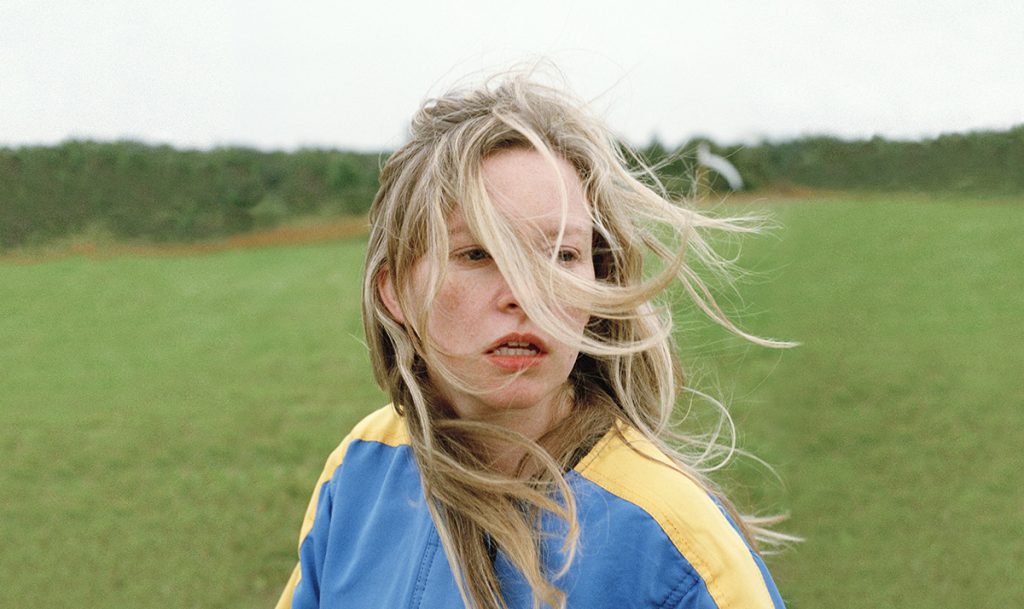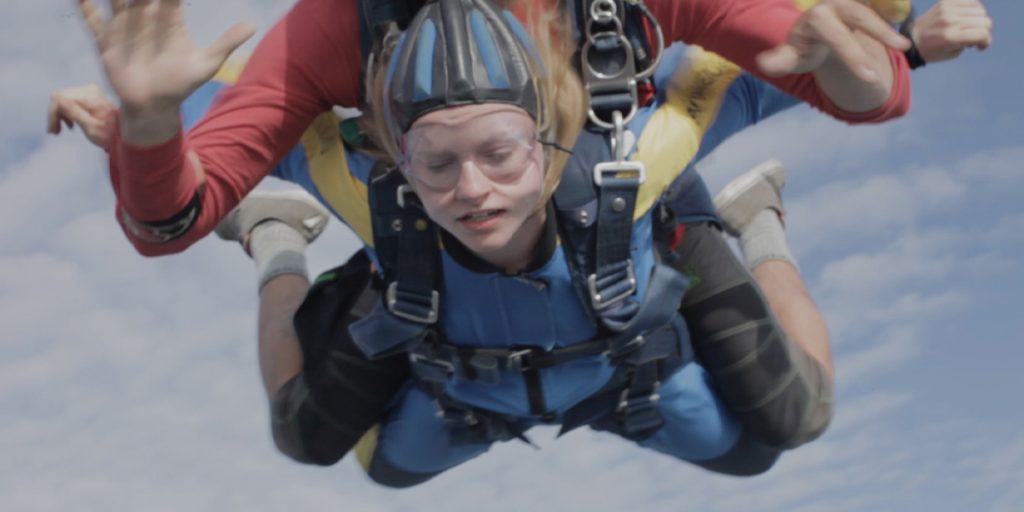Anne at 13,000 ft. is a low-budget character study that plays like a psychological horror, and a confident portrait of a woman in freefall.
Anne at 13,000 ft. begins in a subdued, inviting manner. We see the titular Anne (Deragh Campbell), a 20-something day-care worker, leading a class in a Toronto park, serenely playing with butterflies and guiding the children through their local environment. These pastoral, almost idyllic scenes are intercut with excerpts from a skydiving trip undertaken as a bachelorette party, an activity that intermittently punctuates the rest of the film as we watch Anne hurtle between workplace arguments, horrifying Tinder first dates and gently unnerving conversations with her mother. The film’s 75 minutes are a whirlwind of social dread and impending self-annihilation that undercuts Anne’s freefall. The only respite comes in the form of skydiving, as Anne and her audience are both extricated to moments of brief, exhilarating weightlessness.
It is an ambitious goal for a seemingly by-the-books character study to sustain the rhythm and intensity of a psychological horror, and it is a goal that Anne at 13,000 ft. succeeds at, at least for the most part. Anne suffers from an unspecified and undiagnosed anxiety disorder that manifests itself in joyless, uncomfortable giggling and awkward attempts to use humour in self-defence. Occasionally, Anne’s unending tautness gives way to moments of sudden, explosive self-destruction: Anne throws an empty coffee cup at an exasperated co-worker, or snaps at her quietly over-cautious mother. Writer-director Kazik Radwanski is no stranger to a film of this ilk – his previous features Tower and How Heavy this Hammer have occupied a similar genre – and thus the film’s energy is largely focused and consistent in tone. There is no doubt about the direction in which Anne is moving, and we are constantly aware of the presence of the ground, rushing up to meet her.
A large part of the tonal confidence of the movie comes from the self-assuredness of Radwanski’s directing. While occasionally straying into almost parodically microbudget hyper-realism (large swathes of the film’s dialogue are, of course, improvised), Radwanski is adept enough to impart his own distinct authorial presence. This appears as sequences of incredibly close and frantic handheld camera shots, a sense of bewildering achronology as we leap from scene to scene with minimal explicit guidance, and a complete absence of soundtrack or background music through which we may be offered some escape or distraction. In another filmmaker’s hands, these techniques could have overshadowed and detracted from the film’s incredibly empathetic goals. In Radwanski’s, the two are locked in a mostly happy marriage, with the cinematic styling adding emphasis to the film’s central performance.

Ultimately, it is this leading performance that could make or break Anne at 13,000 ft. Fortunately, in Deragh Campbell, the film finds an actress capable of meeting the subtle difficulties a performance of this intimacy can pose. As Anne, Campbell’s anxious tics and habits are understated yet apparent. Anne is constantly in motion, distracted and distracting, brimming with an energy at once ecstatic and uncomfortable. Through Campbell, we are held, constantly, in the presence not just of a character but her state of mind, too: as a viewer, one is subject to the same fears and restlessness that dominate Anne’s behaviours. The supporting cast are competent, if somewhat forgettable; of particular mention is Matt Johnson as Anne’s romantic interest turned hapless, unenthusiastic boyfriend, unable and largely unwilling to rescue Anne from her mental spiral. Make no mistake, however: while the supporting cast may provide useful colour and divergence, it is Campbell’s remarkable central turn that dominates the picture.
Overall, it is difficult to describe Anne at 13,000 ft. as a completely resounding success, despite its multiple impressive achievements. For a film of its notably brief length, its pacing often slows down to an unforgivable crawl – when an entire picture lasts little more than an hour, a scene that overstays its welcome by only a minute or two leaves a much more bitter taste in the mouth. Nonetheless, there is a great deal to be appreciated about Radwanski’s directing, and about the film as a whole. Its successes, particularly Campbell’s star-making turn at the film’s heart, mark out Anne at 13,000 ft. as a piece of modern Canadian filmmaking worth its place in the vanguard of a rapidly developing and truly exciting wave of cinema.
Anne at 13,000 ft is now available to watch on digital and on demand.

